Abstract
An unstable [t1/2 at 37 degrees = 32 +/- 2 (SD) sec] intermediate, thromboxane A2, was detected in the conversion of prostaglandin G2 into 8-(1-hydroxy-3-oxopropyl)-9,12L-dihydroxy-5,10-heptadecadienoic acid (thromboxane B2) in platelets. The intermediate was trapped by addition of methanol, ethanol, or sodium azide to suspensions of washed human platelets incubated for 30 sec with arachidonic acid or prostaglandin G2. The structures of the resulting derivatives demonstrated that the intermediate possessed an oxane ring as in thromboxane B2 but lacked its hemiacetal hydroxyl group. Additional experiments using 18O2 or [2H8]arachidonic acid in the formation of thromboxane B2 and CH3O2H for the trapping of thromboxane A2, together with information on the t1/2 of the intermediate, indicated the presence of an oxetane structure in thromboxane A2. Incubation of arachidonic acid or prostaglandin G2 with washed platelets led to formation of an unstable factor that induced irreversible platelet aggregation and caused release of [14C]serotonin from platelets that had been incubated with [14C]serotonin. The properties and the mode of formation of this factor indicated that it was identical with thromboxane A2. Furthermore, evidence is presented that the more unstable and major component of rabbit aorta contracting substance (RCS) formed in platelets and guinea pig lung is also thromboxane A2.
Full text
PDF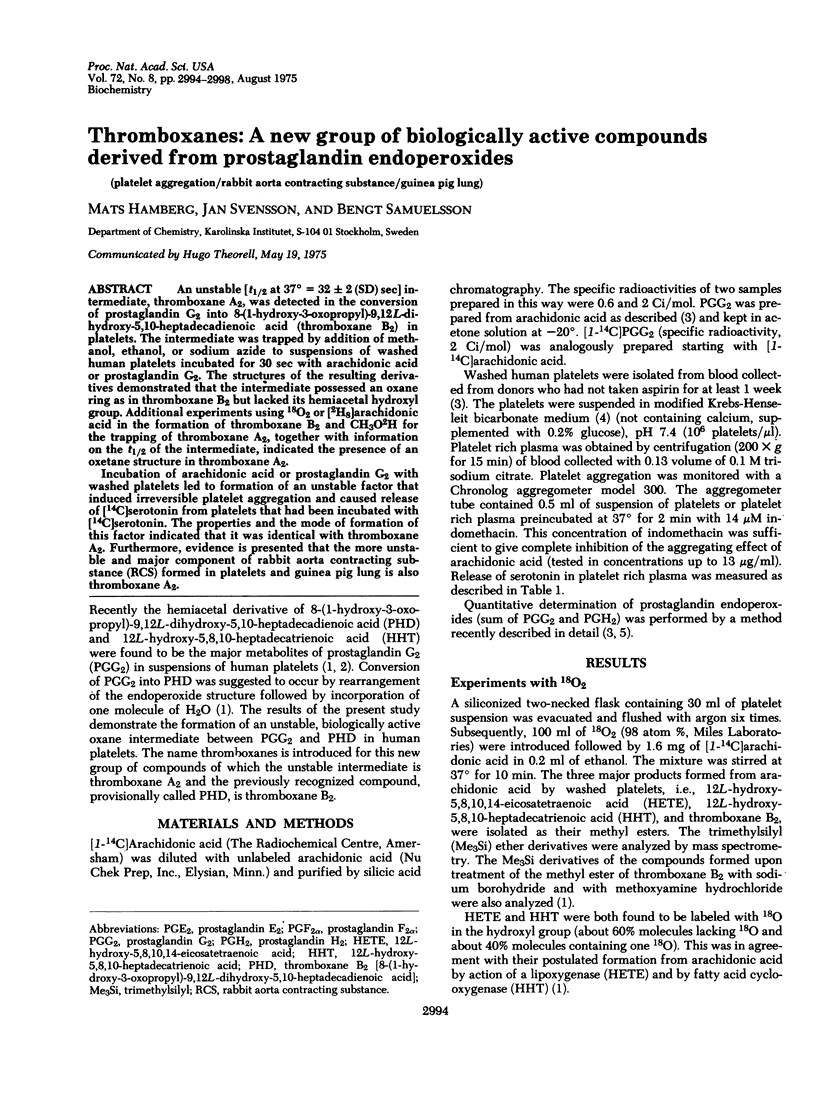
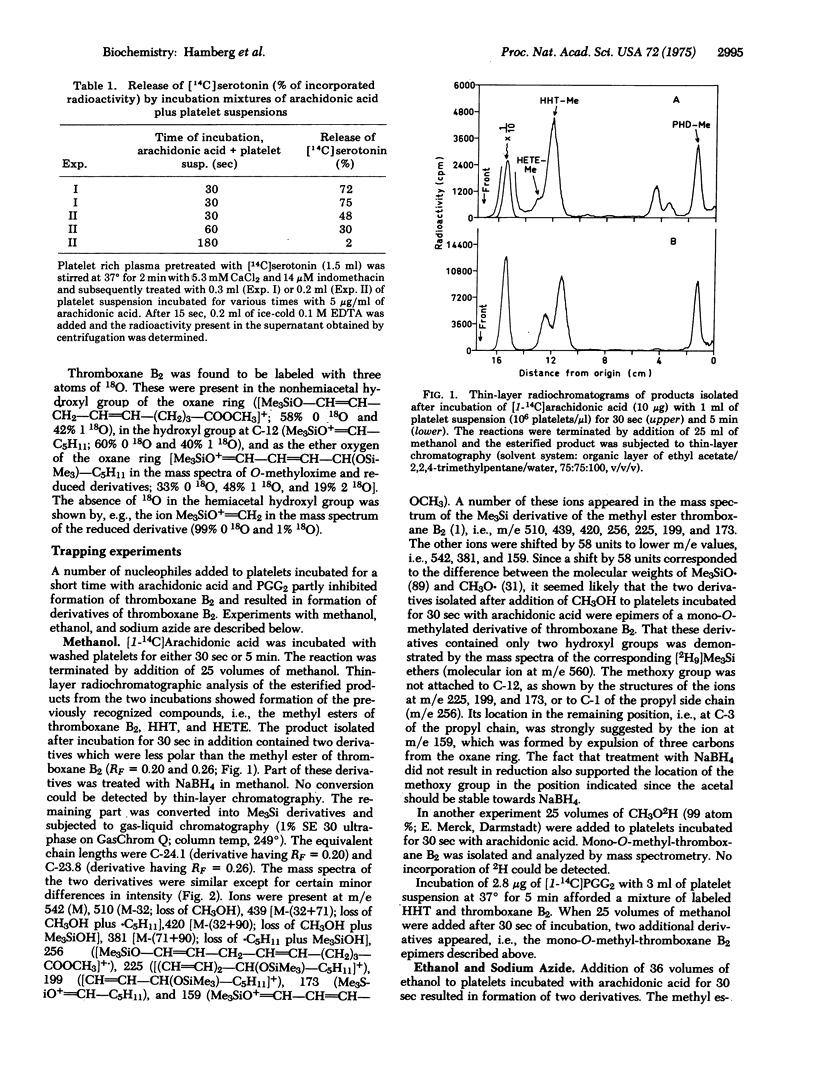
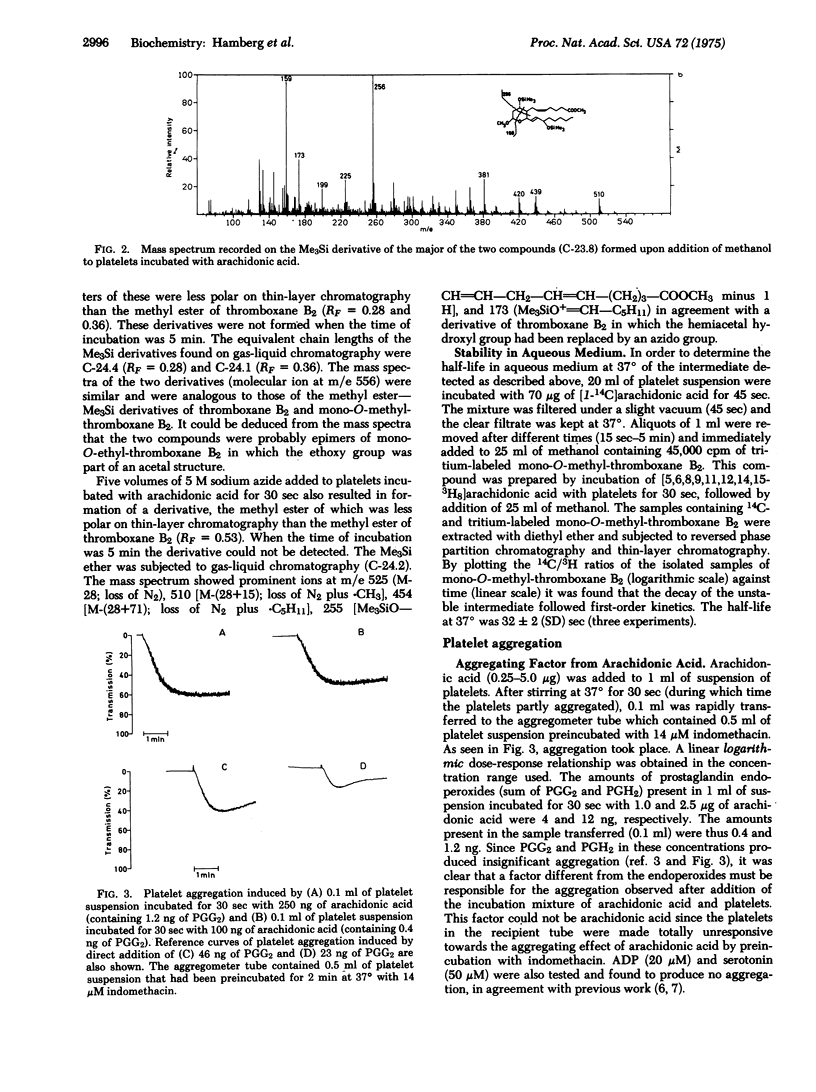
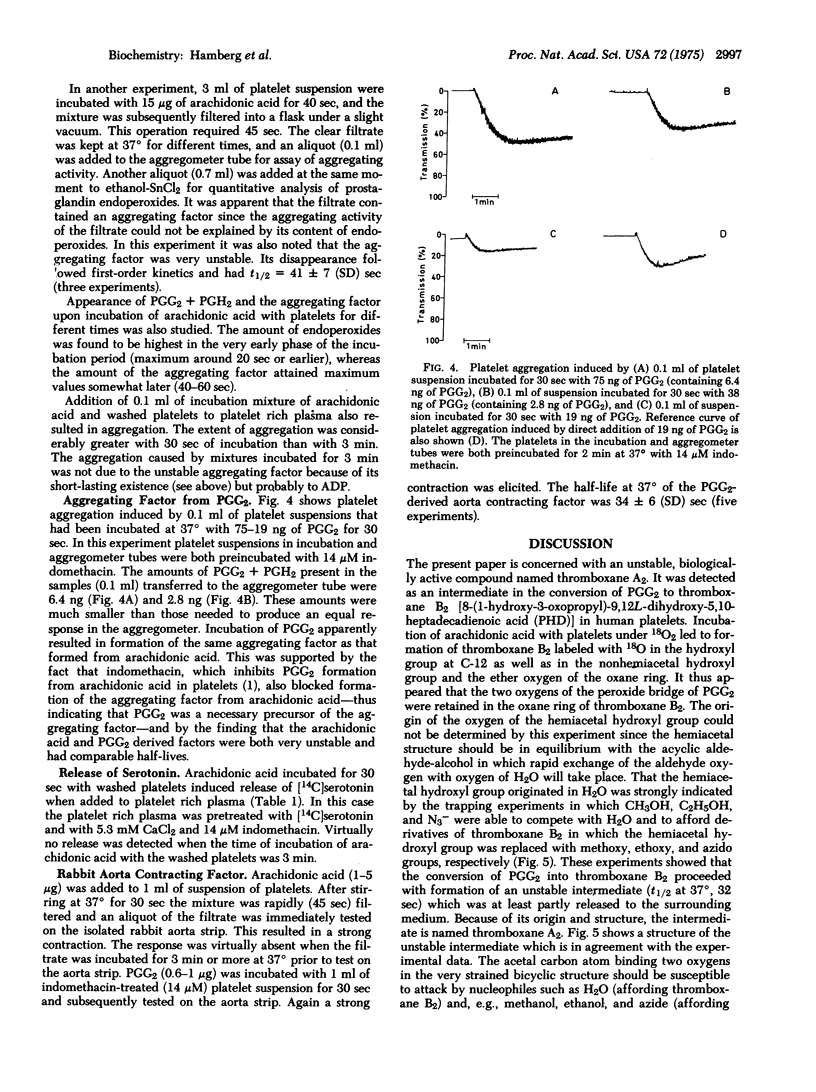
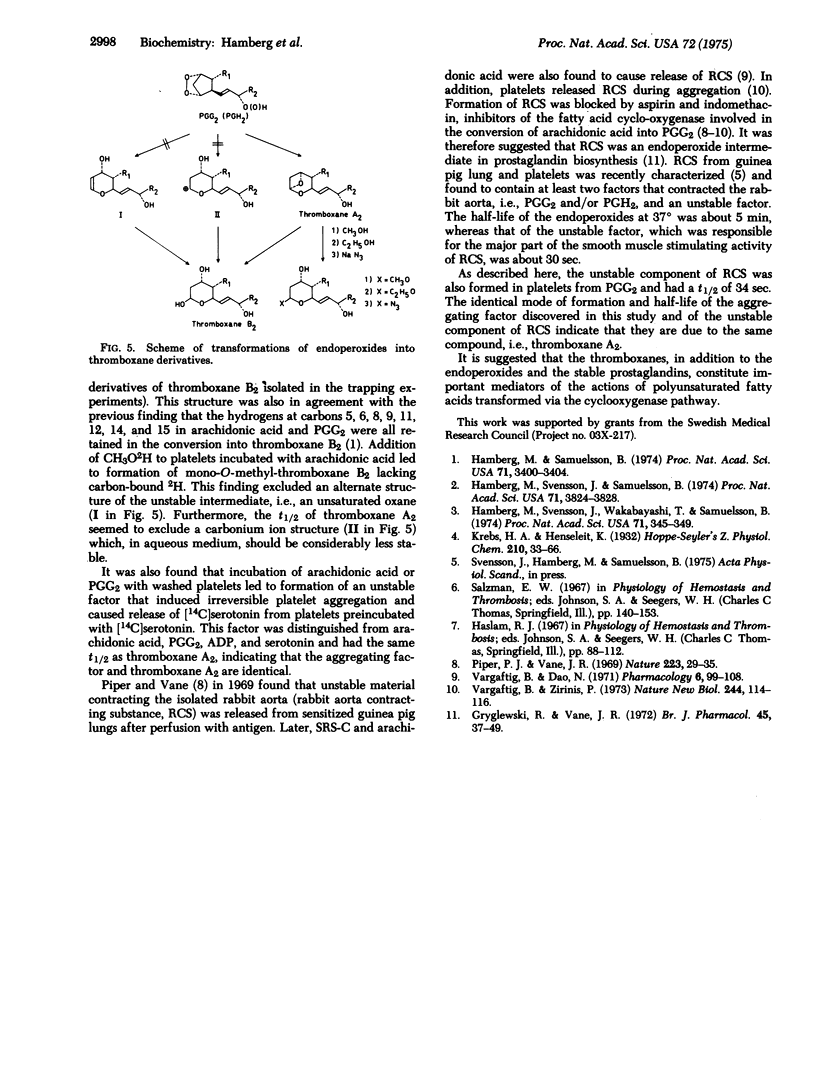
Selected References
These references are in PubMed. This may not be the complete list of references from this article.
- Gryglewski R., Vane J. R. The release of prostaglandins and rabbit aorta contracting substance (RCS) from rabbit spleen and its antagonism by anti-inflammatory drugs. Br J Pharmacol. 1972 May;45(1):37–47. doi: 10.1111/j.1476-5381.1972.tb09574.x. [DOI] [PMC free article] [PubMed] [Google Scholar]
- Hamberg M., Samuelsson B. Prostaglandin endoperoxides. Novel transformations of arachidonic acid in human platelets. Proc Natl Acad Sci U S A. 1974 Sep;71(9):3400–3404. doi: 10.1073/pnas.71.9.3400. [DOI] [PMC free article] [PubMed] [Google Scholar]
- Hamberg M., Svensson J., Samuelsson B. Prostaglandin endoperoxides. A new concept concerning the mode of action and release of prostaglandins. Proc Natl Acad Sci U S A. 1974 Oct;71(10):3824–3828. doi: 10.1073/pnas.71.10.3824. [DOI] [PMC free article] [PubMed] [Google Scholar]
- Hamberg M., Svensson J., Wakabayashi T., Samuelsson B. Isolation and structure of two prostaglandin endoperoxides that cause platelet aggregation. Proc Natl Acad Sci U S A. 1974 Feb;71(2):345–349. doi: 10.1073/pnas.71.2.345. [DOI] [PMC free article] [PubMed] [Google Scholar]
- Piper P. J., Vane J. R. Release of additional factors in anaphylaxis and its antagonism by anti-inflammatory drugs. Nature. 1969 Jul 5;223(5201):29–35. doi: 10.1038/223029a0. [DOI] [PubMed] [Google Scholar]
- Vargaftig B. B., Dao N. Release of vasoactive substances from guinea-pig lungs by slow-reacting substance c and arachidonic acid. Its blockade by nonsteroid anti-inflammatory agents. Pharmacology. 1971;6(2):99–108. doi: 10.1159/000136231. [DOI] [PubMed] [Google Scholar]
- Vargaftig B. B., Zirinis P. Platelet aggregation induced by arachidonic acid is accompanied by release of potential inflammatory mediators distinct from PGE2 and PGF2. Nat New Biol. 1973 Jul 25;244(134):114–116. doi: 10.1038/newbio244114a0. [DOI] [PubMed] [Google Scholar]


